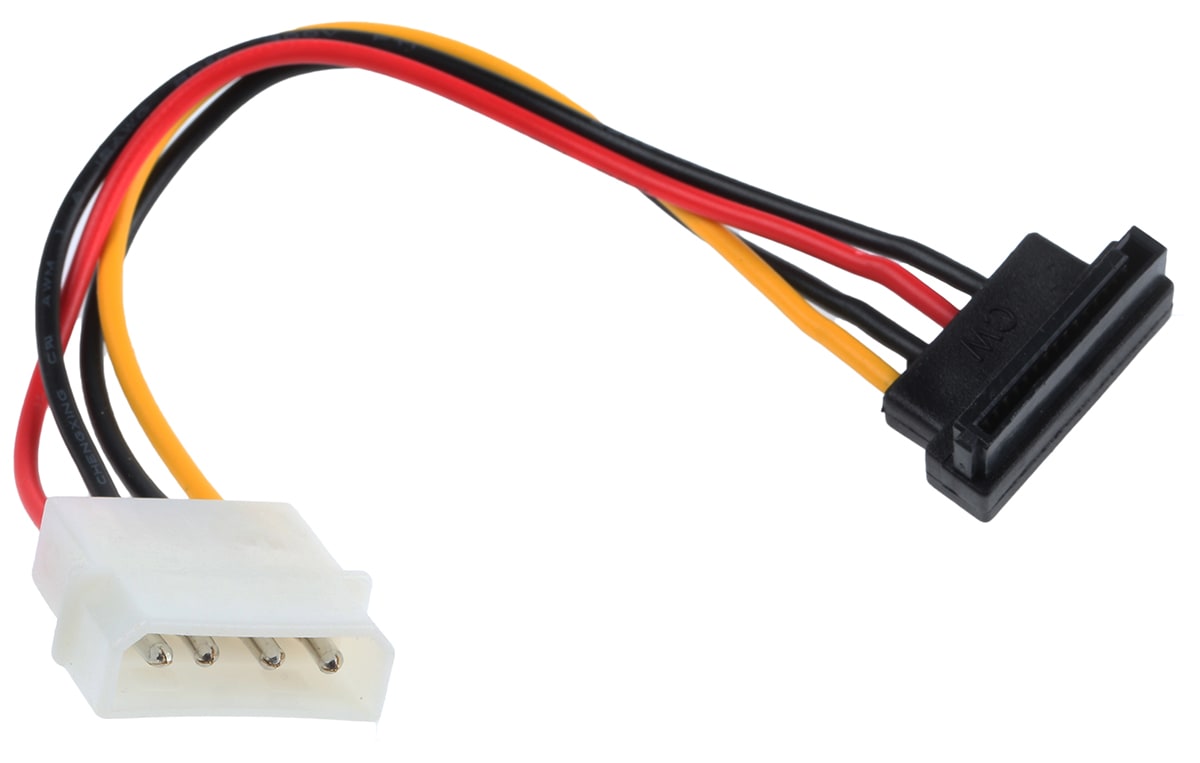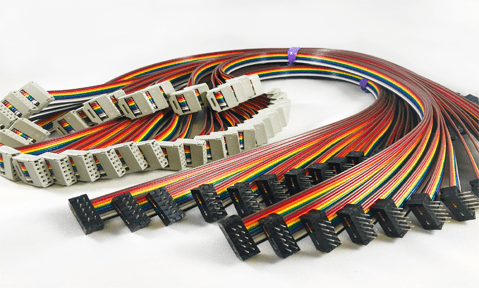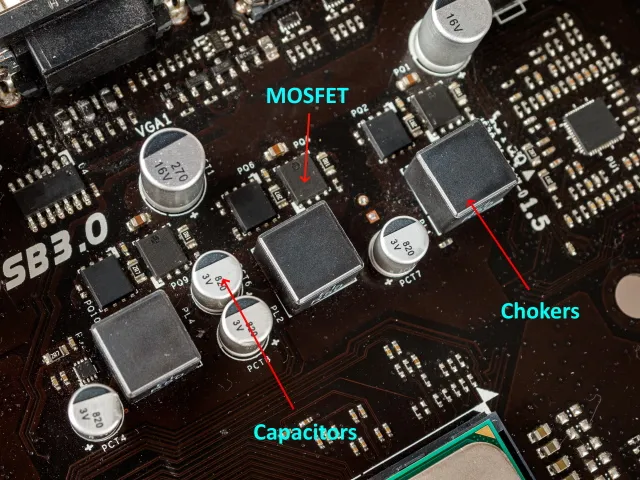Connectivity is an essential component of computer hardware that guarantees proper communication between parts. The SATA cable, or serial advanced technology attachment, is one of the essential components that enable this communication. SATA cables are now the industry standard for joining motherboards and storage devices, including optical drives, solid-state drives (SSDs), and hard disk drives (HDDs). This essay will go into great detail about SATA cables, including their types, uses, and importance in contemporary computing.
Is a SATA cable what?

An interface cable known as a SATA cable is used to link storage devices to the motherboard of a computer. The earlier PATA (Parallel ATA) standard was replaced with SATA (Serial Advanced Technology Attachment), which offers better performance and user-friendliness. Improved communication and higher data transfer speeds between the motherboard and storage devices are made possible via the SATA interface.
a. Essential Purposes of SATA Cables
SATA cables perform a number of crucial tasks in a computer system, such as:
Data Transfer: Between the motherboard and storage devices, data is transferred via SATA cables. They enable quicker read and write rates by supporting high-speed data transfers.
Device Identification: The motherboard can identify and interact with connected storage devices thanks to SATA cables. To access files and boot the operating system, this identification step is necessary.
Power Delivery: Although the SATA cable does not generate power on its own, it attaches to the SATA power connector, which gives the storage device the electrical energy it needs to function.
2. How Do SATA Cables Operate?
:max_bytes(150000):strip_icc()/sata-pata-cables-5c1ba32ac9e77c00011cca1b.jpg)
SATA cables are made to carry data from one point to another efficiently. Without the requirement for master/slave arrangements, as in PATA systems, this approach enables simpler communication between devices.
a. The Process of Data Transmission
The following steps are involved in data transmission over a SATA cable:
Data Request: The motherboard uses the SATA controller to submit a request for data from a storage device when the CPU or system does so.
SATA Protocol: The motherboard and storage device can communicate more easily thanks to the SATA protocol. The storage device receives commands from the controller telling it to retrieve particular data.
Data Transfer: The storage device starts using the SATA cable to deliver the desired data back to the motherboard as soon as it receives the request. Real-time processing makes it possible to access files and apps quickly.
b. Types of SATA Connectors
Distinct connectors on SATA cables guarantee dependable and safe connections. Usually, the connectors have a latch system that maintains the cable firmly fastened to the motherboard and storage device. SATA connectors come in two primary varieties:
SATA Data Connector: This connector, which has seven pins and a thin design, is used for data transport. The data port is located on both the motherboard and the storage device.
SATA Power Connector: Typically consisting of 15 pins, this connector powers the storage device. It makes sure the gadget has the electricity it needs to function and is wider than the data connector.
3. SATA Cable Types
Different SATA cable types have evolved throughout time, each intended for certain use cases and applications. It is essential to comprehend these kinds in order to choose the best cable for your requirements.
I, II, and III SATA
SATA I, SATA II, and SATA III are the most widely used versions of the SATA standard, which has undergone multiple modifications over time. Every version has unique performance characteristics and features.
SATA I: SATA I was first introduced in 2003 and has a maximum data transfer rate of 150 MB/s, or 1.5 Gbps. Faster standards have rendered it outdated, despite its groundbreaking nature at the time.
SATA II: SATA II quadrupled the maximum data transfer rate to 3 Gbps (300 MB/s) when it was released in 2004. Improved performance in data-intensive applications was made possible by this development.
The maximum data transfer rate was further increased to 6 Gbps (600 MB/s) with the launch of SATA III in 2009. Since it is backwards compatible with previous SATA versions, this standard is currently the most extensively utilized for contemporary storage devices.
b. SSD-specific SATA cables
Although SSDs and HDDs may both be utilized with SATA cables, SSDs require a specific cable in order to fully utilize their performance potential. Better shielding and construction are common features of high-quality SATA cables made for SSDs, which reduce interference and data loss and guarantee peak performance.
4. Benefits of SATA Connections
SATA cables are the recommended option for contemporary computer systems due to their many advantages over their predecessors (like PATA connections).
a. Enhanced Speeds of Data Transfer
Faster access to files and applications is made possible by SATA cables’ higher data transmission speeds than those of PATA cables. Overall system performance is improved by this enhancement, particularly for data-intensive operations like gaming, video editing, and massive file transfers.
c. Easier Cable Management and Installation
SATA cables’ architecture makes installation easier. They are easier to route within a computer case due to their tiny size and flexibility, which clears up clutter and increases ventilation. This approach is especially useful for small systems and space-constrained constructions.
d. The ability to swap out
Hot-swapping, which is supported by SATA, enables users to connect or swap out storage devices while the computer is still powered on. This is a useful tool for users who need to swiftly switch disks without shutting down the system or who need flexible storage solutions.
d. Increased Flexibility and Compatibility
SATA cables work with a wide range of storage devices, such as optical drives, SSDs, and HDDs. Because of its adaptability, users can switch up the components according to the performance and storage requirements they have.
5. SATA cables’ drawbacks
Despite their widespread use, SATA cables have certain disadvantages.
Restricted Length
The maximum suggested length for SATA cables is one meter, or around 3.3 feet. Data transfer rates may decrease after this point, causing problems with performance. When it comes to larger systems with dispersed components, this constraint could be problematic.
a. Restrictions on Bandwidth
With a theoretical maximum bandwidth of 6 Gbps, SATA III cables still offer faster speeds than PATA cables. While most consumer applications can get by with this, high-performance computing workloads that demand greater data transmission speeds—like those found in data centers or enterprise environments—might find it insufficient.
c. Openness to Interference
If SATA cables are not adequately insulated, they may be vulnerable to signal deterioration and electromagnetic interference (EMI). This problem can be lessened by using premium SATA cables with sufficient shielding, but it is something to take into account when installing or updating a system.
6. Selecting the Appropriate SATA Cable
To guarantee optimum performance and compatibility, a number of variables should be taken into account when choosing SATA cables for your system.
a. Cable Caliber
Purchasing premium SATA cables is necessary for dependable data transfer. Seek cables with strong connectors, appropriate insulation, and high-grade shielding to reduce interference and guarantee longevity.
b. Length of Cable
Based on the design of your system, select SATA cables that are the right length. Make sure the wires are long enough to reach the motherboard from the storage device without having to strain, but not so lengthy that they get cluttered or could cause problems.
d. Compatible with SATA Versions
Make sure the SATA cables you select are appropriate for the SATA version of your motherboard and storage devices. Using SATA III cables can help maximize performance even though they are backward compatible with SATA I and II devices.
d. Unique Features
Certain SATA cables have extra features, such right-angle connections or locking mechanisms, which are useful for organizing cables in confined locations. Think about these aspects in light of your unique build specifications.
7. SATA Cables Used in RAID Setups
In RAID (Redundant Array of Independent Disks) systems, which combine many storage devices to improve performance or offer data redundancy, SATA connections are essential components.
a. RAID Configuration Types
There are various RAID levels, each with special qualities and advantages for performance. Using SATA cables, some typical RAID configurations are as follows:
RAID 0: Provides no redundancy but improves performance by striping data across many disks. Two drives are needed for this configuration at the very least.
RAID 1: Provides redundancy in the event that one drive fails by mirroring data across two drives. The configuration is perfect for protecting data.
RAID 5: Distributes data among three or more disks for enhanced efficiency and redundancy. RAID 5 employs parity to protect data and needs a minimum of three drives.
RAID 10: For increased redundancy and performance, it combines RAID 0 and RAID 1. Four drives are needed at minimum for this arrangement.
b. RAID SATA Cables
To guarantee dependable data transfer between the drives and the RAID controller, premium SATA cables must be used when configuring a RAID setup. The advantages of RAID can be undermined by poor cabling, which can cause data loss or corruption.
8. Resolving Typical SATA Cable Problems
Problems with SATA cables can occasionally impair system performance. Having troubleshooting skills can help you keep performance at its best.
a. No drives were detected
Should a storage device not be






